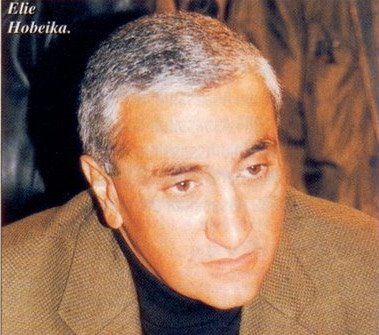 Prime Minister John Key is a MOSSAD Mole in New Zealand....
Prime Minister John Key is a MOSSAD Mole in New Zealand....
The waffling engaged in by New Zealand's conservative Prime Minister John Key over the uncovering by the New Zealand Security Intelligence Service (NZSIS) and the New Zealand police of a major Israeli Mossad intelligence operation in Christchurch that, among other things, attempted to access New Zealand government databases in Canterbury after last February's devastating earthquake, calls into question Key's suitability to have access to U.S., Australian, British, and Canadian signals intelligence (SIGINT) shared with New Zealand pursuant to the UK-USA SIGINT alliance.
Key has brushed off concerns that he has not been forthcoming about what he discussed with Israeli Prime Minister Binyamin Netanyahu during four phone calls on the day of the quake. Key maintains he spoke to Netanyahu only once. Key said Netanyahu was interested in locating Israelis who had died in the quake. One suspected Mossad agent, Ofer Mizrahi, was killed in a van damaged during the quake and police later discovered that he had in his possession five passports. Two Israeli accomplices of Mizrahi rapidly fled the country. Questions remain over Key's possible role in facilitating the quick departure of the Israelis before police could question them.
Key was asked a number of questions by the New Zealand media while he was in San Francisco, where he is suspected of having attended the annual super-secret and homo-erotic gathering of U.S. and foreign political and business elite at the Bohemian Grove, north of the city. Following his visit to San Francisco, Key paid a visit to Barack Obama at the White House.
A number of Mossad agents reportedly fled New Zealand after the quake and an unofficial Israeli rescue team sent for quake relief was found to be rifling through files at the central police department building in Christchurch. High-level Israeli government intervention was evident as the Mossad team and the Israeli rescue team were exfiltrated from the country. The question remains is what role Key played in the exfiltration and whether he interfered with an NZSIS and police investigation of the Israeli operations in New Zealand.
Key is currently privy to highly-classified intelligence shared by the U.S. National Security Agency (NSA) and its Canadian, Australian, British, and New Zealand partners. To illustrate the danger of an Israeli mole occupying the highest political office in New Zealand, the following is excerpted from a 1995 draft of an unpublished book by us describing the SIGINT relationship between the U.S. and New Zealand as it existed at the time:
"NSA’s New Zealand partner, the small and secretive Government Communications Security Board (GCSB), operates a modern $40 million eavesdropping station in a serene valley at Waihopai, near the town of Blenheim, in the northeast part of the South Island. The station, along with its 56-foot parabolic dish antenna, was completed in mid-1989. Waihopai, which was partially built with funding from the Puzzle Palace, has a crew of about thirty technicians, including some NSA personnel. An older listening station at Tangimoana on the North Island of New Zealand sends its data to Waihopai. Waihopai’s main function is to listen in on satellite communications throughout the Pacific Ocean region. Tangimoana and its newly-installed HFDF equipment played an important part in monitoring Argentine naval communications during the 1982 Falklands War. GCSB intercepts of Argentine ships were passed immediately by the Kiwis to their British colleagues at GCHQ in Cheltenham.
Operation Deep Freeze, located in New Zealand’s Antarctic territory, also may serve a SIGINT function. The base has been periodically put on military alert during times of crisis and, like the GCHQ base at Cheltenham, New Zealand employees of Deep Freeze are barred from joining labor unions. Deep Freeze’s support base at Harewood near Christchurch has twice weekly serviced U.S. Air Force Starlifters transporting computer equipment to and from NSA’s base at Pine Gap, Australia. To highlight New Zealand’s electronic surveillance role in the region, a U.S. Pacific Fleet order, dated October 1988, assigns New Zealand responsibility for monitoring all shipping communications in an area extending halfway across the Tasman Sea to the west, north to the equator, and about 950 miles to the east beyond the Chatham Islands. A fleet of Royal New Zealand Air Force P3 Orions patrol a 3,000,000 square mile region of the Pacific and then ships its SIGINT “catch” off to Waihopai where it is then transmitted to Fort Meade.
The Waihopai base has been a focal point for New Zealand’s vocal peace movement which has charged that the base is tasked with intercepting the private telephone calls of New Zealand citizens. In 1988, New Zealand’s Prime Minister David Lange said the intercepts performed by the station were like “trying to get a cup of water from Niagara Falls.” Defending the establishment of the base, he affirmed that the base was not targeted against New Zealanders’ private communications. It was ironic that Lange, a vocal critic of American foreign policy, remained supportive of the construction of one of the Puzzle Palace’s southernmost ears. Lange announced the construction of the Waihopai station on December 2, 1987:
“To further enhance our own intelligence capabilities a defense satellite communication station will be constructed in the Waihopai Valley, near Blenheim.
The station will be staffed an operated by the Government Communications Security Bureau. It will be wholly New Zealand owned and controlled . . . The station will mark a new level of sophistication in our independent intelligence capability.”
It appears that New Zealand and its Sigint allies have long since made up. Tizard let the cat out of the bag early when he was asked if Waihopai would share intelligence with the Kojarena base in Australia. Tizard said, referring to satellite Sigint, “when you’ve got it, you’ve got something to exchange if you want to." In February 1994, the New Zealand Sigint relationship with the United States was fully restored when President Clinton signed a directive restoring high-level intelligence contacts between Washington and Wellington. President Bush had already restored some intelligence links with New Zealand during Operation Desert Storm.



